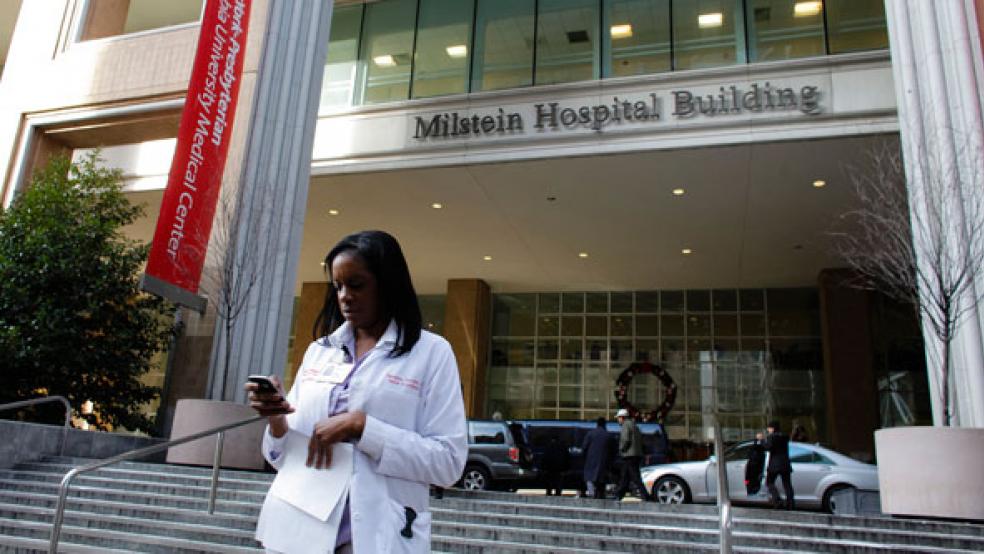Hospitals nationwide can save millions of dollars a year and improve patient safety by tightening outdated rules on how much blood is ordered for surgeries, researchers say.

New blood use guidelines at Johns Hopkins Hospital, based on a study there and its first revised rules in more than 35 years, are expected to save more than $200,000 a year in lab costs and wasted blood. The new rules can also ensure that better, fresher blood is available for patients who actually need it.
The report says that guidelines should ensure that blood is readied for surgeries likely to require transfusions but not for procedures that rarely require them. (Read the original study.)
“In 1976, when the last guidelines were published, there were 60 surgical procedures on the list. Now, with the addition of laparoscopy, robotic surgery, and other minimally invasive techniques, there are 135 categories of surgical procedures,” says study leader Steven M. Frank, an associate professor of anesthesiology and critical care medicine. “Blood loss has declined over time as surgery has evolved, but the guidelines were never reconsidered, leading to a lot of unnecessary work to prepare blood for surgery.”
RELATED: Why Your Hospital Bill Is Totally Negotiable
For the study, published in the journal Anesthesiology, Frank and colleagues analyzed computerized anesthesia records, including blood use, for 53,000 surgeries performed at Johns Hopkins from January 2010 through March 2012. They looked at how often blood transfusions were needed during various types of surgeries, and how much blood was transfused.
Then they devised a new mathematical formula to determine whether patients undergoing each type of surgery would most likely need no blood, which ones might possibly need blood (requiring a sample to be sent to a lab to get the patient’s blood type and other information) or whether blood was very likely to be needed.
In cases where the new algorithm is wrong and an unforeseen transfusion is needed, Frank notes, emergency blood (type O-negative, the “universal donor” blood) can be procured and used within minutes with minimal risk. That scenario occurred in three out of every 1,000 cases in the study, but those patients had substantial anemia prior to surgery, a condition for which blood should be ordered anyway.
Surgeries unlikely to require transfusions include appendectomy, tonsillectomy, and removal of the thyroid or gallbladder. In 1,605 cases of thyroid removal over the study period, only three transfusions were needed, Frank says. “What we’ve found (in the old guidelines) is a ‘better-safe-than-sorry’ approach that isn’t actually helpful,” Frank says. “We haven’t transfused a thyroidectomy in over two years at our institution, so there’s a huge opportunity to save money by following our new guidelines.”
When blood is ordered for a surgical case, there are expenses associated with typing a patient’s blood and screening for various antibodies to ensure a good match is found, as well as with preparing the actual units and bringing them to the operating room. Time spent preparing blood for, say, thyroid removal might be better spent preparing blood for open-heart surgery, where several units will likely be required.
Meanwhile, Frank adds, unused blood set aside for surgical patients is removed from the available pool for 24 hours. While it can be used eventually, recent research by Frank’s team suggests that blood stored longer than three weeks begins to lose the capacity to deliver oxygen-rich cells where they may be needed most.
In some cases, he notes, Johns Hopkins Hospital was under-ordering blood, a condition also remedied by the new guidelines. Liver transplants are likely to require the largest amount of blood, with the recommendation that 15 units be prepared and in the operating room.
While the new blood-ordering guidelines developed are specific to Johns Hopkins, they can be adapted to other hospitals. Also, hospitals with computerized anesthesia records, roughly50 percent of hospitals in the U.S., can use the algorithm to develop their own hospital-specific guidelines.
This article originally appeared in Futurity.org. Source: Johns Hopkins University.




